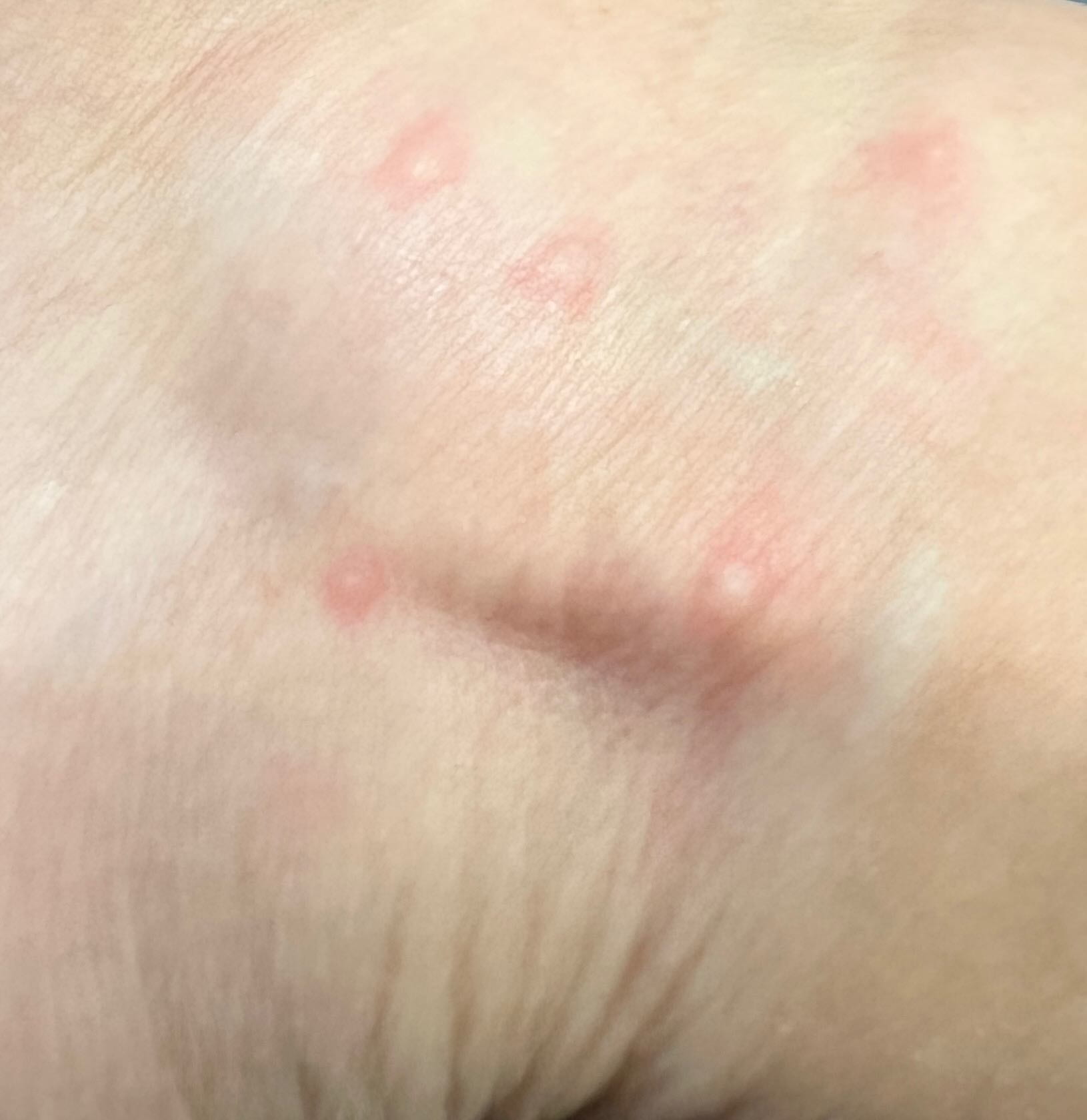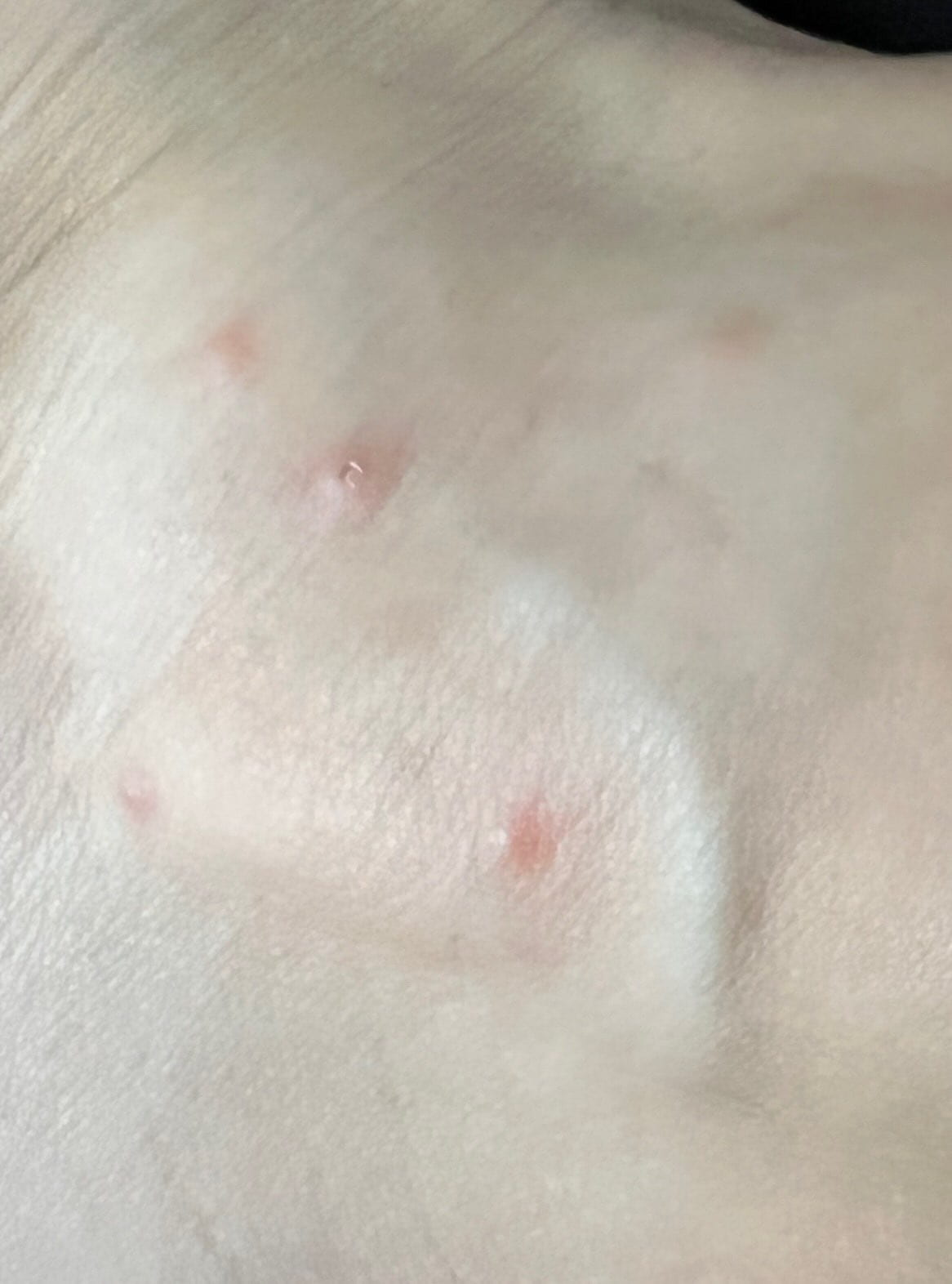–by Cassandra Olds, Livestock and Veterinary Entomology
Chiggers, also commonly known as harvest mites are a prevalent problem in Kansas as well as much of the United States. Nymph and adult stages are free-living predators that feed off other arthropods and their eggs but the six-legged larval stage are parasitic. Chiggers do not feed on blood, instead they secrete digestive enzymes from their salivary glands which liquefy skin cells at the attachment site. They consume the liquefied cells together with lymph secreted by the body in response to the induced damage. In many people the result of this feeding is an intensely itchy local reaction. Chigger eggs are laid in batches in plant litter on the ground or directly on the soil surface. People and animals often happen across groups of larvae when walking across or sitting on the grass surface with multiple bites occurring at the same time often in a localized area. Chiggers often chose areas where the skin is thin such as ankles (Figure 1 and Figure 2).

Figure 1: Local reaction on ankle to five chigger bites 24 hours after being bitten. The white itchy bumps are similar to those seen with insect bites like mosquitoes but usually occur in groups.

Figure 2: One week after chigger bites, itching has resolved and the red marks begin to fade.
Keeping grass cut short and avoiding walking through areas of taller grass can limit exposure to chiggers. Insect repellants can also be useful in deterring these itch-inducing critters. Removing clothing and washing the skin surface can remove any chigger larvae before they have the chance to attach and feed. If you have already been bitten, the intense itching can be relieved (at least for a while) with topical itch creams and usually resolves by itself within a week to 10 days. Try as much as possible to resist the intense urge to scratch at the bites as this can introduce bacteria which can cause a secondary infection!